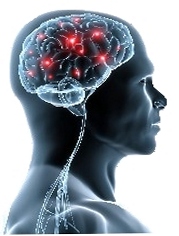Cyclical Vomiting Syndrome (CVS) has long been regarded as a migraine equivalent disorder. It is manifested by attacks that carry the whole mark of migraine, except for the absence of headache. (Fleisher and Matar, 1993; Abu-Arafeh and Russell, 1995).
Children between the ages of 4 and 15 were studied in Scotland using well-defined clinical criteria for the diagnosis of both CVS and migraine. Although severity, frequency, and duration of CVS attacks may vary considerably, the symptoms are in a comparable pattern to childhood migraine. Emphasis has been placed on the similar clinical features including the complete resolution of symptoms between attacks and the almost identical provoking and relieving factors (Wyllie and Schlesinger, 1993; Cullen and MacDonald, 1963).
The common typical diagnostic features of CVS are manifested by recurrent, sudden, and self-limiting attacks during which the child looks ill and miserable, with complaints of nausea, vomiting, pallor, and lethargy. The duration of vomiting episodes is from hours to days, with the average length of episode being 24 hours. The intervals of normal health between episodes vary. In this study the mean age of onset of CVS was 5, with the majority of cases (72%) starting in early childhood. Each episode is similar within individuals as to time of onset, intensity, duration and frequency. Similar to migraine, attacks of CVS may be precipitated by travel, stress, excitement, tiredness, and lack of sleep, but this is only in the minority of children who can identify a trigger factor. The attacks may be preceded by non-specific changes in mood and behavior and sensory aura symptoms.
It is very important that the diagnosis of CVS should only be made on the exclusion of other, more serious disorders that require specific investigations and treatment. The goals of management of acute CVS are to prevent dehydration, replace fluid loss, relieve pain and provide general supportive measures. Most children can be safely treated at home. Additionally Pizotifen, used successfully in the treatment of migraine, has had some success in reducing the frequency and severity of CVS and abdominal migraine attacks.
In addition to treatment and the closely related clinical features, along with other similar characteristics, it is strongly suggested that the two disorders represent an extended disease spectrum.

